Advertising on search engines like Google and Bing has been a critical marketing strategy for businesses of all sizes for a while now.
Advertisers have always had to balance their ad spend with their return on investment (ROI). One of the most crucial factors that determine the ROI is the Ad Quality Score.
But does this score still matter?
In this blog post, we will discuss whether the Ad Quality Score still matters and if businesses should still prioritize it in their advertising strategies.
What Is an Ad Quality Score?
Ad Quality Score is a score assigned on a scale of one to 10 by Google or Bing when running ads on their platforms to rate the relevance and usefulness of ads based on various factors.
To better understand Ad Quality Score, though, it’s important to dive deeper into the factors that determine this score:
- Click-through rate. CTR is the number of clicks an ad receives divided by the number of times it’s shown (impressions). A higher CTR means the ad is more appealing to users.
- Ad relevance. This refers to how closely related the ad is to the user’s search query or intent. Google and Bing use various signals to determine relevance, such as the keywords in the ad and on the landing page, as well as the ad’s targeting settings.
- Landing page. This refers to the experience users have when they click on an ad and are taken to the landing page. Page load speed, mobile-friendliness and the relevance of the landing page’s content to the ad and search query all play a part.
Each component is evaluated with a status of “Above average,” “Average” or “Below average.” This evaluation is based on a comparison with other advertisers whose ads showed for the exact same keyword over the last 90 days.
A higher ad Quality Score means that the ads are more likely to appear at the top of search results pages, receive more clicks, and cost less per click.
Learn More: Domain Authority: How to Increase Your Ranking Score from Scratch
Why Ad Quality Score Matters
So, the short answer to the question posed in the intro is: Yes, ad Quality Score still matters. Having a good Quality Score can make it cheaper to run your advertising and can lead to more conversions.
The longer answer is….
In addition to the benefits of lower costs and more conversions, there are several other reasons why ad Quality Score matters. One of the key reasons is that it helps improve the user experience. By ensuring that ads are relevant and useful to users, ad Quality Score helps to maintain the trust of the search engine users. This also means that users are more likely to engage with your ads and your brand.
Another important reason is that ad Quality Score can impact the visibility of your ads.
If your ads have a low Quality Score, they may not appear at the top of the SERPs or even at all. This can result in lower CTRs and fewer conversions.
Furthermore, ad Quality Score is an important metric for measuring the effectiveness of your advertising campaigns. By monitoring your ad Quality Score, you can track the performance of your ads over time and identify areas for improvement. This can help you to optimize your campaigns and achieve better results.
In summary, the Quality Score of an ad is a metric used by advertising platforms such as Google Ads to evaluate the relevance and quality of an ad. The higher the Quality Score, the more likely the ad will be shown to users, and the lower the cost per click (CPC) will be.
Learn More: SEO Score: How to Grade Your Website (in 5 Minutes)
How to Improve Your Ad Quality Score
Since it does matter if you have a good Quality Score, let’s quickly go over how to improve it.
The big thing that people make a mistake on is they only focus on their ad copy and the targeting, but they don’t focus on their website, the landing page, the experience that those people who click on their ad are getting, or even who is clicking on the ads.
Many marketers also don’t focus on rotating their ads. Just because certain text or images work right now for you, it doesn’t mean that they’re going to continually perform the same way in the future. You need to continually change things up, and when your ads are a little bit more fresh, what you’ll see is that you start getting better clicks over time.
So here are a few ways to improve your ad Quality Score.
Optimize Your Keywords
One of the key elements of Ad Quality Score is the selection of the right keywords. It’s crucial to understand the intent of your audience. This means taking the time to research and analyze the keywords that users are searching for when they’re looking for a product or service like yours.
Search intent is basically just the reason behind a specific search query. Why is a person Googling something? Is it just a simple question that needs a simple answer? Or do they need to find a relevant website to learn something more detailed? Or maybe they’re ready to make a purchase right away.
Google’s Search Quality Rating guidelines includes a “Needs Met Rating Guideline” with a scale ranging from FailsM (Fails to Meet) to FullyM (Fully Meets):
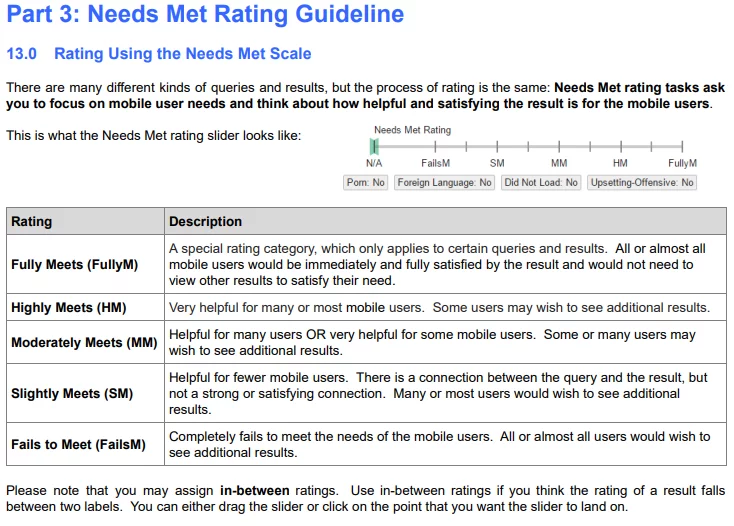
Using tools like Google Keyword Planner can help you find relevant keywords with high search volumes and low competition. You can also use long-tail keywords that are more specific and targeted to your audience. These may have lower search volumes, but they can be highly effective in reaching your target audience.
Don’t forget your negative keywords, which are search terms that you don’t want your ad to show for. They are used to prevent your ads from being displayed when someone searches for a specific keyword or phrase that is not relevant to your product or service. By adding negative keywords to your campaign (at the campaign or ad group level), you can save money on irrelevant clicks and improve the overall performance of your ad campaign.
For example, if you’re running an ad campaign for your shoe store, you may want to exclude terms like “free shoes,” “cheap shoes,” or “shoe repair” from your campaign as they are not relevant to your business and may attract clicks from users who are not interested in buying your shoes.
The word “apple” is another example of different search intent:
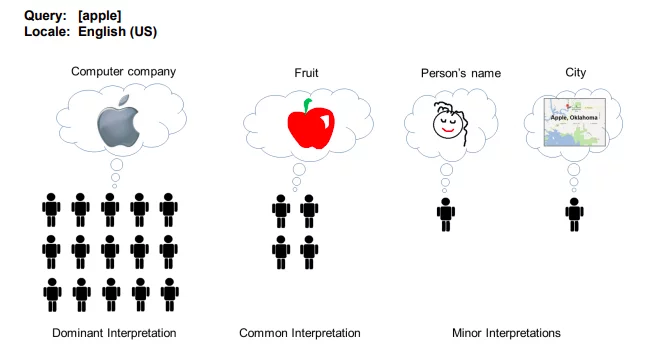
Specific targeting is also crucial to ensure that your ads reach the right audience. You can use targeting options such as location, device, and demographics to refine your audience and improve the relevance of your ads. By targeting specific audiences, you can improve your ad Quality Score and reduce your cost per click (CPC) by showing your ad to people who are more likely to be interested in your product or service.
All of this will make sure that your ads are relevant to the searcher’s query and intent.
Dive Deeper:
* SEO Keyword Research Made Easy in 2023
* Why You Should Use Long-Tail Keywords in Your SEO Campaign
* Targeting Branded vs. SEO Keywords: Which Should You Focus On?
Write Compelling and Relevant Ad Copy
Ad copy is another critical factor in increasing ad Quality Score. Marketers must ensure that their ad copy is compelling, and the hook captures the audience’s attention.
Marketers must constantly monitor the performance of their ad copy and test different elements like headlines, sub-headlines, and images. A good hook that worked last week may not continue to hold the audience’s attention, and marketers must be flexible to adapt to changes in the market.
The major components of a text ad include:
- Headline: You can have 3 headlines in your ad of up to 30 characters each. Headlines are the first thing that people notice in your ad.
- Display URL: This is your website address and an optional path field where you can give a name to your landing page URL in order to make it easier for your customers to understand what the page is about.
- Ad Description: You can add all the details that are related to your service or offer in the description field. It is recommended that you include your CTA in this field.
You’ll need to keep your ad copy short and snappy, as these are the length limits of all the fields used in text ads:
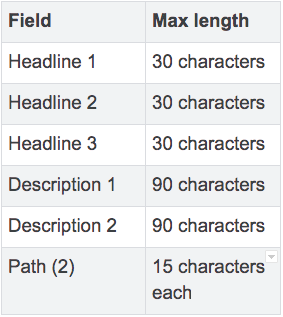
To write ad copy that is compelling and click-worthy:
- Be as specific as possible and use the exact phrases in your ad copy that users might search for. For example, if the user queries “Adidas Yeezy 350 shoes for men” then you should use those exact words in your ad copy instead of just the more general “Adidas shoes for men.”
- Your ad copy consists of a headline, display URL and ad description, so use your main keyword in all three places.
- Always include a clear, action-oriented CTA and use psychology to compel users to try your products or services.
One more thing. Using Ad Extensions allows you to include additional info in your ad that’s relevant for users and makes it even more convenient for them to click.
Here’s an example of a sitelink ad extension (one of nine types of extensions that you can use in your text ads):
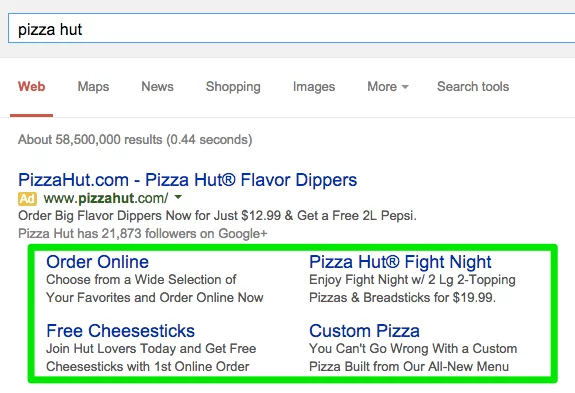
Learn More: How to Create Compelling Text Ads on Google (with Examples)
Design a Clear and Relevant Landing Page
A landing page is a web page that visitors reach after clicking on an ad. Optimizing these landing pages is essential to ensure that visitors are seeing the answer to the question that initially got them to click on your ad. This will result in a good user experience and make them more likely to take action.
It’s essential that your landing page matches the ad copy and contains the relevant information that the audience is looking for. The page should be easy to navigate and load quickly. The image(s) should be clean, simple, visually striking and show your product as it’s meant to be used. Don’t include links to your home page, your blog, your social media, etc.
A great (and super simple) example is this landing page from Geico. The CTA “Begin a Quote” leaves no room for misinterpretation or overwhelm from having too many things for the user to click on. Their logo is not even linked, so the user really has no exit points other than the CTA.

This landing page from Moz is another great example. It contains a relevant image that shows what using the product will be like, a CTA button that stands out, and social proof at the bottom that encourages the user to follow through.
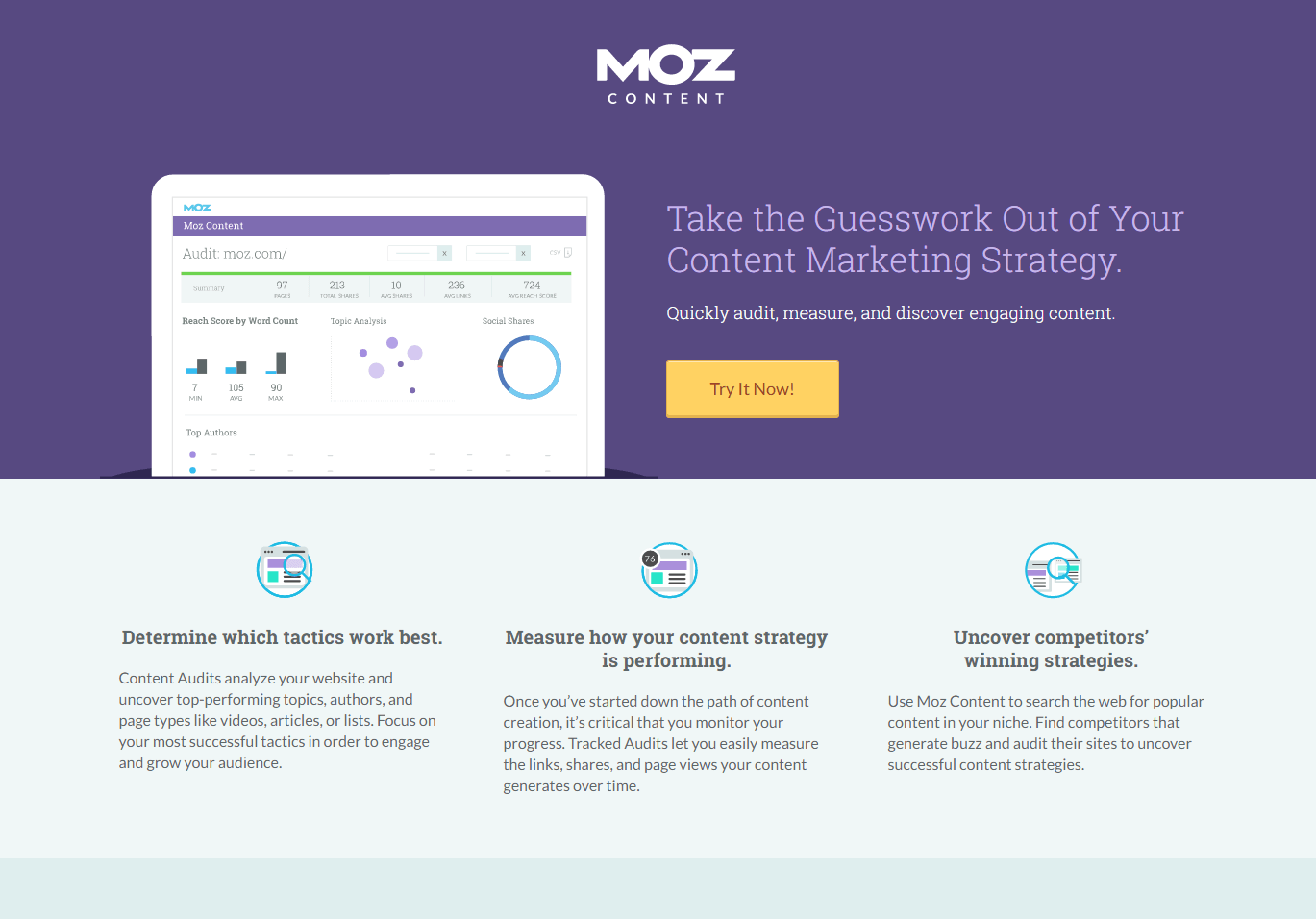
The experience that visitors have on the landing page can influence their decision to convert, and a good experience can increase the ad Quality Score.
Learn More: The Ultimate Guide to Creating a High-Converting Landing Page
Don’t Forget to Continually Optimize
Optimization is key to improving Ad Quality Score. Marketers must continuously monitor and optimize their ad campaigns to ensure that they remain effective.
This includes:
- Optimizing keywords, ad copy and landing pages
- Testing different elements
- Rotating ads to keep them fresh
How to Check Your Quality Score
Here’s how to check your Quality Score:
- Sign in to your Google Ads account.
- In the left menu, select Keywords.
- In the upper right corner of the table, click the columns icon .
- Under “Modify columns for keywords”, open the Quality Score section. To view the current Quality Score and its component statuses, choose any of the following to add to your statistics table:
- Quality Score
- Landing Page Exp.
- Exp. CTR
- Ad Relevance
- To view past Quality Score stats for the reporting period you’re looking at, choose any of the following metrics:
- Quality Score (hist.)
- Landing Page Exper. (hist.)
- Ad Relevance (hist.)
- Exp. CTR. (hist.)
You can view the change in daily scores by segmenting your table by day.
- Click Apply.
Last Word on Ad Quality Scores
Yes, Ad Quality Score still matters in 2023, and businesses should still prioritize it in their ad campaigns.
Although ad Quality Score is not the only factor that determines the success of advertising campaigns, a higher Ad Quality Score can result in lower costs and higher conversions, which can ultimately lead to better return on investment (ROI) for businesses.
By selecting the right keywords, creating compelling ad copy, optimizing landing pages, and continuously optimizing their campaigns, marketers can increase ad Quality Score, lower costs, and get more conversions.
Here’s a quick summary of how to increase your Ad Quality Score:
- Improve your ad relevance: Ensure that your ad copy and keywords are relevant to the user’s search query. The more relevant your ad is to the user, the higher your Quality Score will be.
- Increase your click-through rate (CTR): A higher CTR indicates that your ad is more appealing to users. This can be achieved by creating compelling ad copy, using ad extensions, and targeting the right audience.
- Enhance your landing page experience: Ensure that your landing page is relevant to the ad and provides a good user experience. This includes having a clear call-to-action, fast loading time, and mobile-friendly design.
- Use relevant keywords: Use relevant keywords that match the user’s search query. Avoid using broad match keywords that may trigger irrelevant searches.
- Optimize ad text and headlines: Use engaging headlines and ad text that are closely related to the user’s search query. This will help your ad stand out and attract clicks.
- Improve ad targeting: Use targeting options such as location, device, and demographics to ensure that your ad is shown to the right audience. This will increase the relevance of your ad and improve your Quality Score.
If you’re ready to increase your Ad Quality Score and get more conversions, Single Grain’s PPC experts can help!👇



